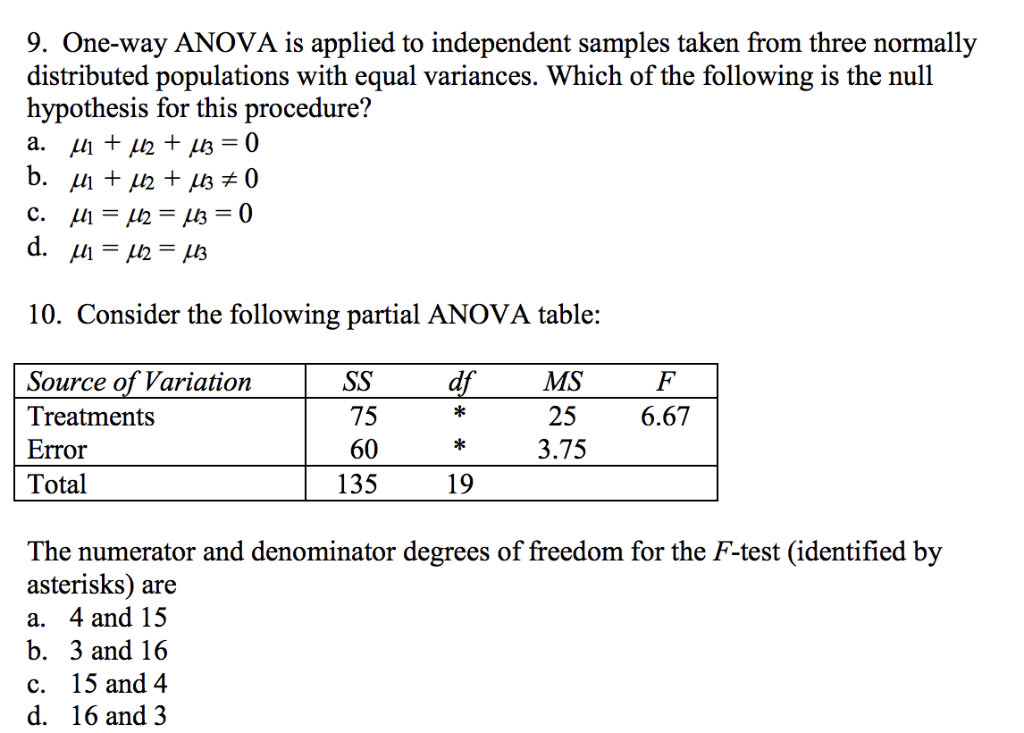

However for this Group I to remain different from the Group II, the variation among the groups should be high. Here if we see closely then the average will be 10,000 only (20000 + 6000 + 12000 + 4000 + 8000 ÷ 5 = 10,000), however, the value varies a lot and thus the groups are not meaningful but if the sample had the values such as 10000, 9000, 13000, 8000, 10000 then the group would have made much more sense as the variation among the group would have been less. You analyze the first group and it turns out that the customers in the first group have to spend something like this-Ģ0000, 6000, 12000, 4000, 8000 etc.

Now before going ahead with the offer you want to make sure that the groups are meaningful and thus require to know if these groups are actually (statistically) different from each other. 1,000 in your store and will be offered a gift card worth of Rs. Similarly, the Group II and III will be who have spent Rs. 10,000 on your store and will be offered a gift card worth of Rs. The Group I will be who have spent on average Rs. Imagine you are an owner of a clothing store and launch a Diwali offer where you decide to pick 1,000 of your customers randomly and categorise these customers into 3 groups. 3 Using F Statistic for Hypothesis Testingīefore getting into the details of how we calculate the F Ratio, we must understand why we divide the variation between the groups with the variation among the groups.1.5 SSb + SSe = Sum of Squares Total (SSt).1.4 SSb degrees of freedom v/s SSe degrees of freedom.1.2.2 Finding the Denominator of MSe (degrees of freedom of SSe).1.2.1 Finding the Numerator of MSe (SSe).
 1.2 Calculating Mean Square Error Within (MSe or MSwithin) (Denominator of F Ratio). 1.1.2 Finding the Denominator of MSb (degrees of freedom of SSb). 1.1.1 Finding the Numerator of MSb (SSb). 1.1 Calculating MSb (Mean Square between) (Numerator of F Ratio). Thus in One-Way ANOVA, the F-statistic is the following ratio:į = variation between sample means ÷ variation within the samples variance attributable to between-group differences and variance attributable to within-group differences. For this, we calculate an F ratio for which we divide the variance of the independent variable into two components: variation between sample means and variation within the samples i.e. the more time we run the T-test, the chances of making a Type I error will increase.Ĭoming back to One-way Analysis of Variance, the purpose of it is to test whether group means are equal or not. For example if we have an independent variable with three levels – X, Y and Z then we have to run three separate T-Tests comparing X with Y, Y with Z and Z with X and each time we run a test i.e. However, T-Test cannot be used if the levels in the independent variable are more than two. Here the only difference between the T-Test and One Way ANOVA will be that T-Test will produce a T value while ANOVA will produce an F Ratio which is nothing but the T value squared, still, the results will be identical. It is important to note that the independent T-Test can also be used if the independent variable has only 2 levels (groups). One way ANOVA is used to compare means of the groups of an independent variable to see if the groups are significantly different from each other or not.
1.2 Calculating Mean Square Error Within (MSe or MSwithin) (Denominator of F Ratio). 1.1.2 Finding the Denominator of MSb (degrees of freedom of SSb). 1.1.1 Finding the Numerator of MSb (SSb). 1.1 Calculating MSb (Mean Square between) (Numerator of F Ratio). Thus in One-Way ANOVA, the F-statistic is the following ratio:į = variation between sample means ÷ variation within the samples variance attributable to between-group differences and variance attributable to within-group differences. For this, we calculate an F ratio for which we divide the variance of the independent variable into two components: variation between sample means and variation within the samples i.e. the more time we run the T-test, the chances of making a Type I error will increase.Ĭoming back to One-way Analysis of Variance, the purpose of it is to test whether group means are equal or not. For example if we have an independent variable with three levels – X, Y and Z then we have to run three separate T-Tests comparing X with Y, Y with Z and Z with X and each time we run a test i.e. However, T-Test cannot be used if the levels in the independent variable are more than two. Here the only difference between the T-Test and One Way ANOVA will be that T-Test will produce a T value while ANOVA will produce an F Ratio which is nothing but the T value squared, still, the results will be identical. It is important to note that the independent T-Test can also be used if the independent variable has only 2 levels (groups). One way ANOVA is used to compare means of the groups of an independent variable to see if the groups are significantly different from each other or not.







 0 kommentar(er)
0 kommentar(er)
